Spring Arrivals on the Necklace
Posted on April 30, 2017
It was cooler this morning than yesterday but 15 birders turned out for a walk around Leveret Pond and on to Olmsted Park and Ward’s Pond and back. The walk was promoted by the Brookline GreenSpace Alliance which works tirelessly to maintain the natural beauty of this section of the Emerald Necklace. As we gathered near the parking area off Pond Street we watched two species of swallow cruise over the pond:
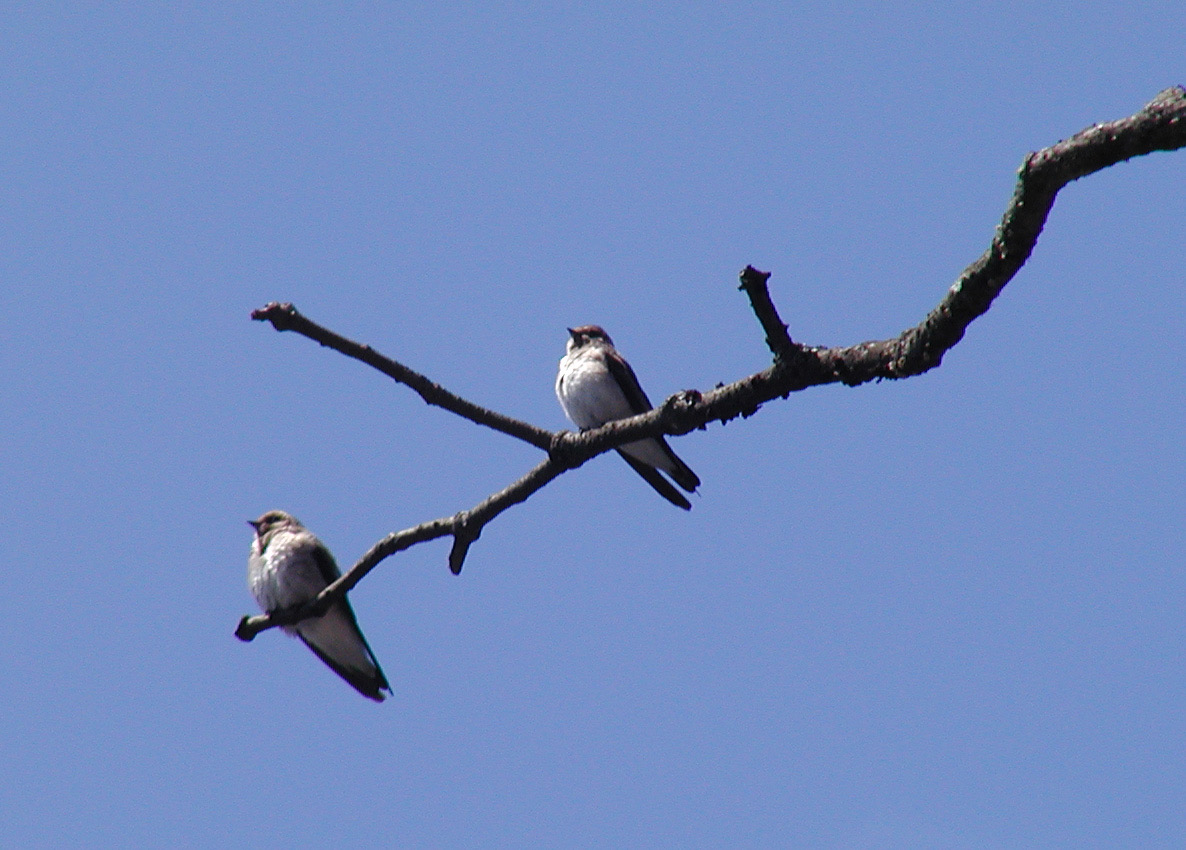
Northern Rough-winged Swallows uncharacteristically at rest. Note the smaller brown body with white breast and the lengthy folded wings.
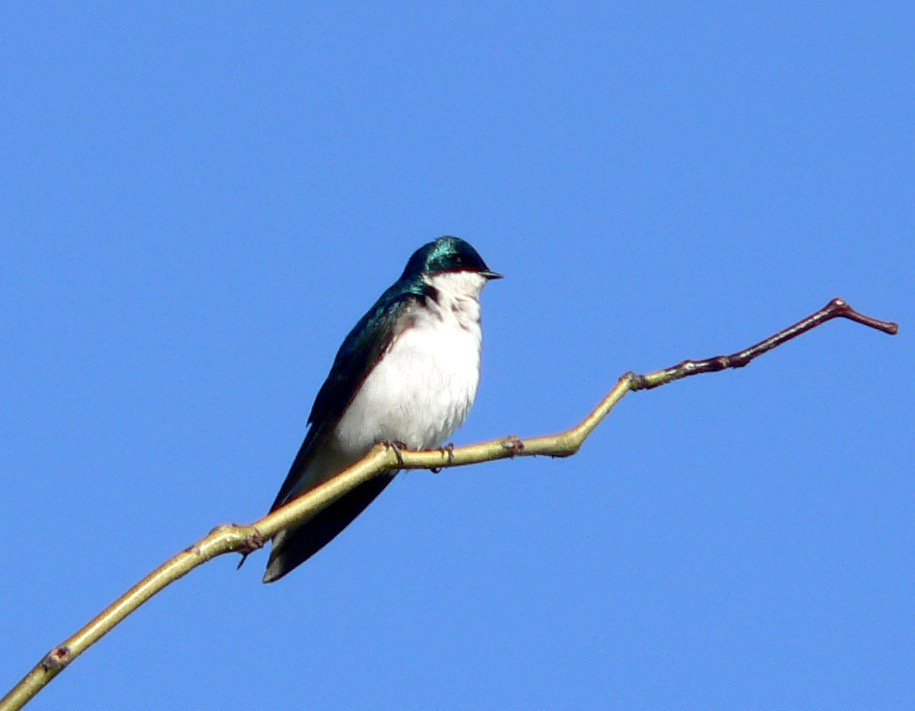
Male Tree Swallow, showing the iridescent blue head, back and wings and white breast.
We noted the steadier flight of the Tree Swallows versus the more active wing beats of the less common rough-wings.
As we circled around to the Boston side of this boundary pond we looked across to one of the small islands and located a Black-crowned Night-Heron sitting stock still in a brush tangle; what a stunning bird!
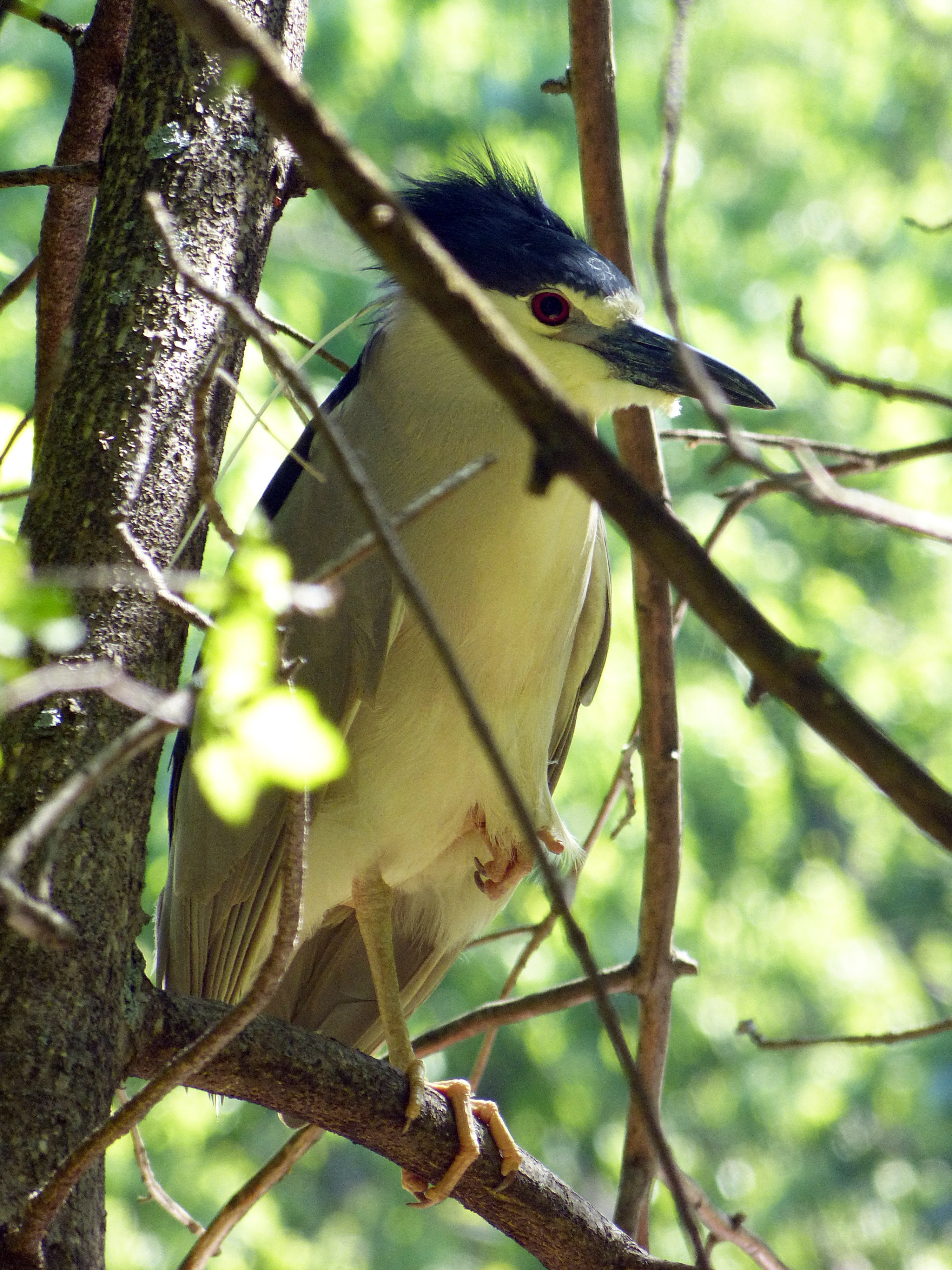
Black-crowned Night-Heron, adult
At the end of the walk someone in the group located it again, this time from the Brookline side- and much closer- allowing for great looks. We also had a Great Blue Heron that flew past us at Leverett; we later caught up with it on the edge of tiny Willow Pond.
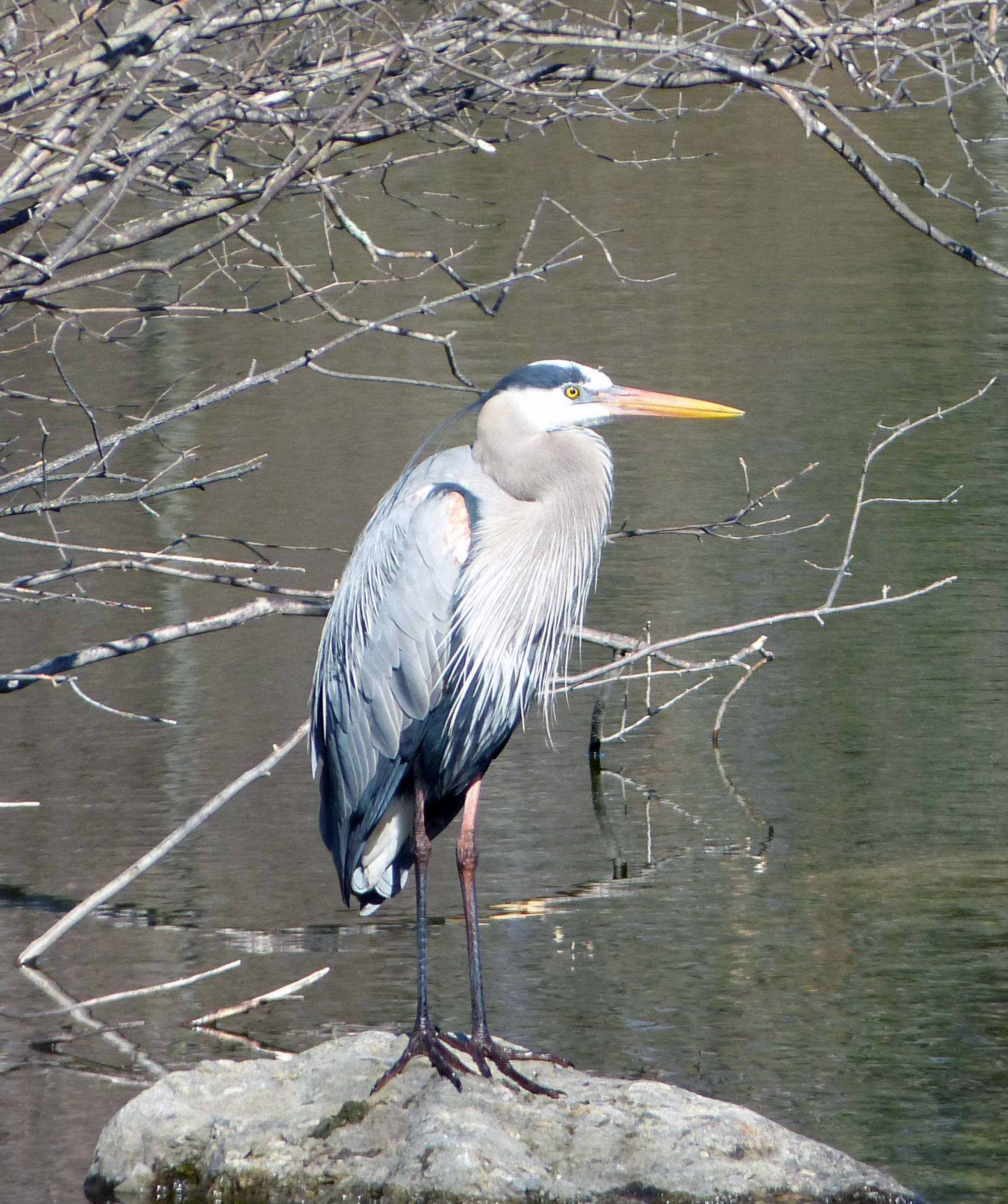
The Great Blue Heron is larger and taller, and much more common on this stretch of the Necklace. Notice the showy black feather plume off the head of this adult bird compared to the white plume on the Night-Heron
This area is usually good for woodpeckers but we saw none and heard only one Northern Flicker. I wish we had seen it:
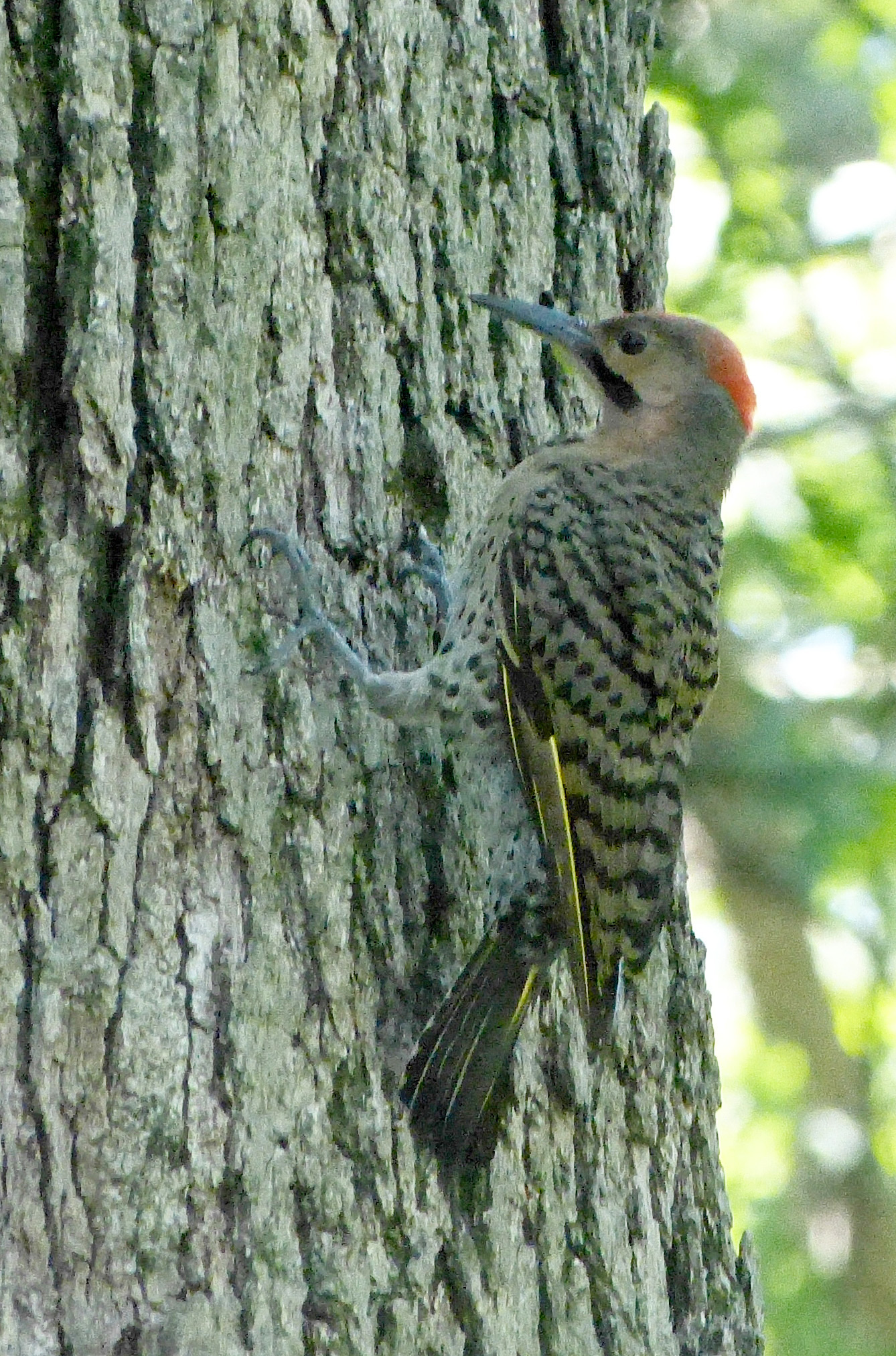
There are two “races” of the Northern Flicker, Red and Yellow Shafted, referring to the color of the wing and tail feather shafts. Can you tell which one this is?
Warblers were equally hard to find; we had several Yellow-rumped and one lovely Black and White Warbler that we saw in the thickets on the way up to Ward’s Pond and again on the path as we returned:
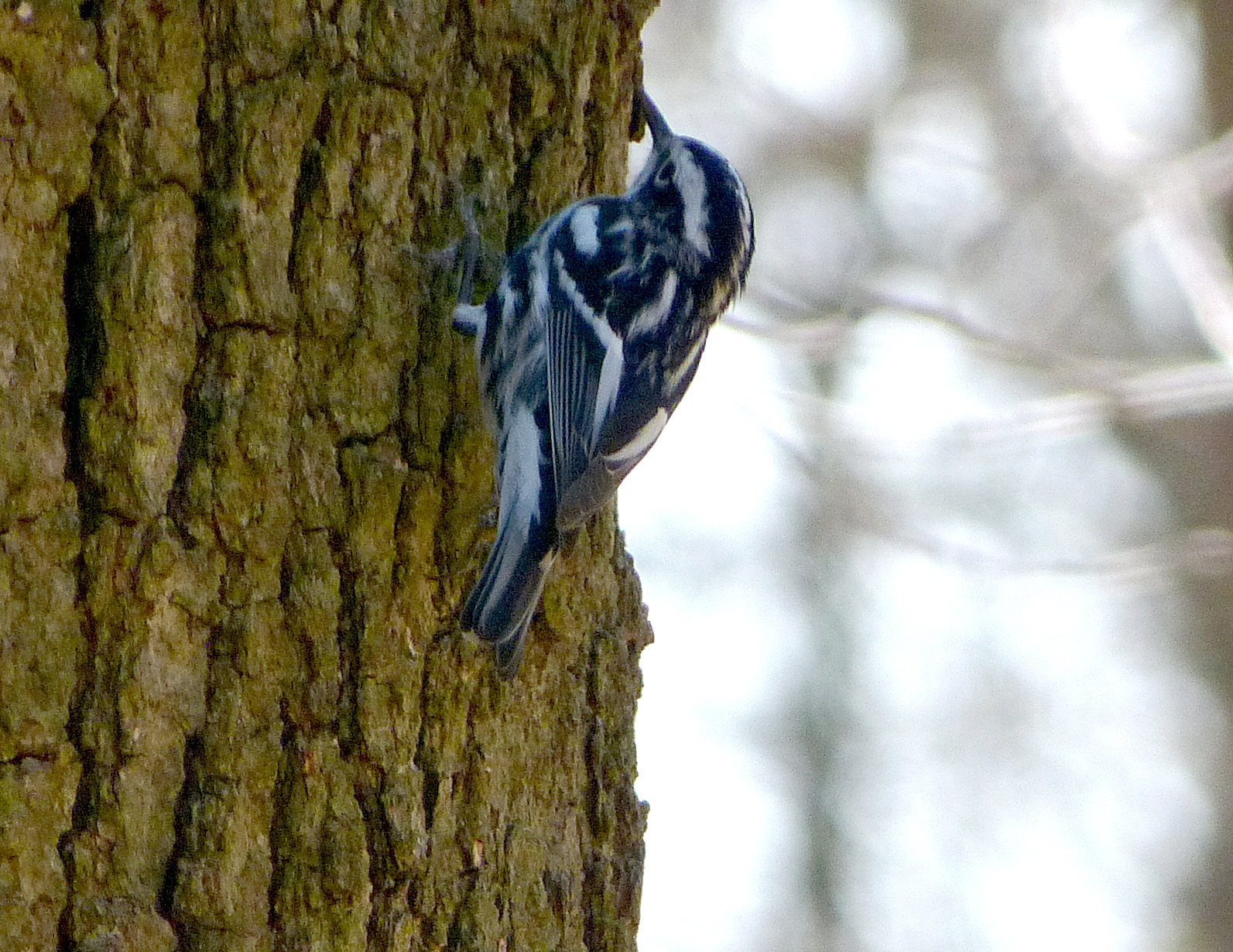
Black and White Warblers are usually found on the trunk or main branches of a tree rather than out in the foliage as they search for little creatures hiding in the bark.
Throughout the walk we enjoyed the calls of Baltimore Orioles and Warbling Vireos. The latter bird does not match it’s singing brilliance:
when finally visualized:
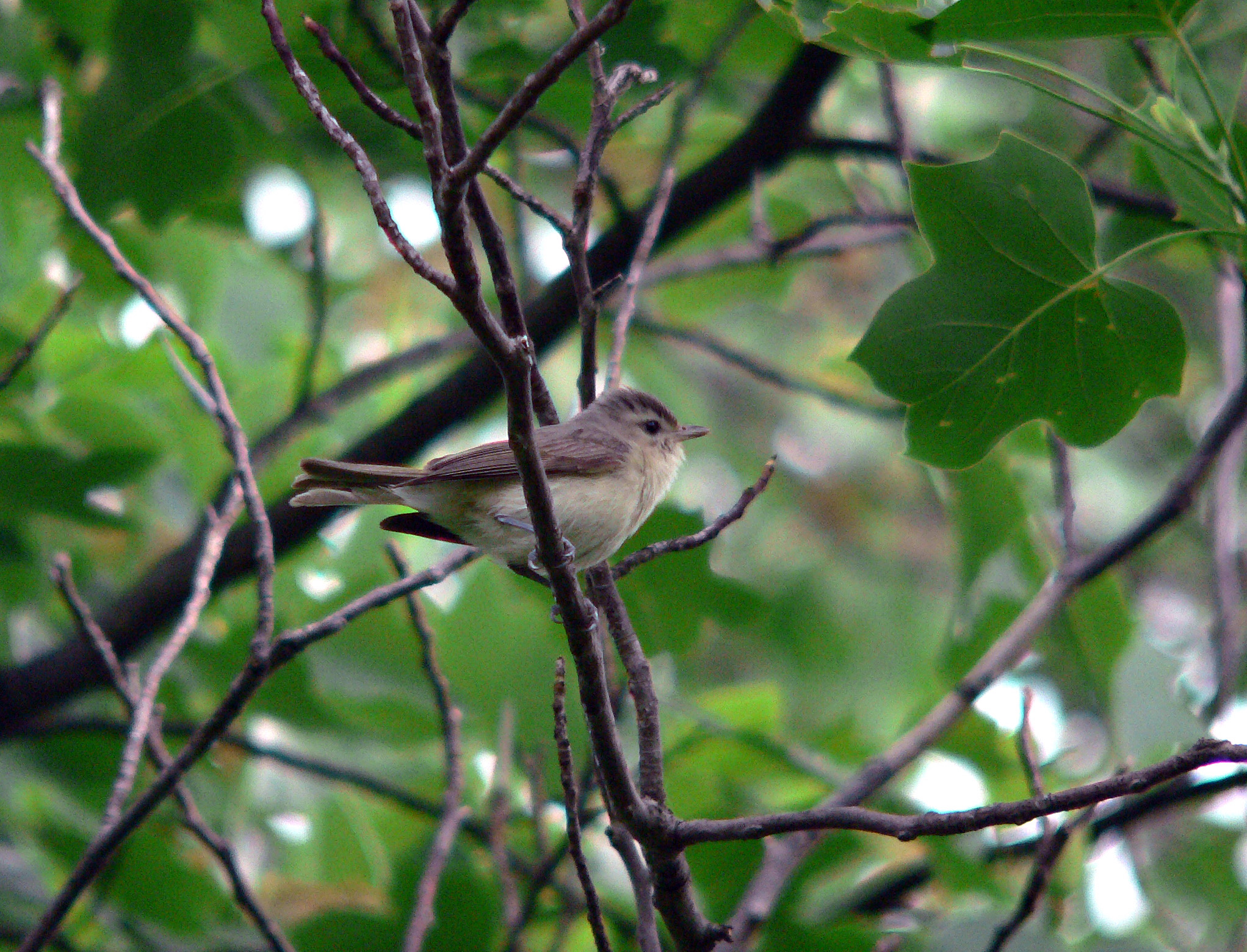
Drab is an unkind but nonetheless accurate description of this little bird.
No bird walk in this locale would be complete without sighting a Wood Duck, and we watched a pair from a distance and later very close up:
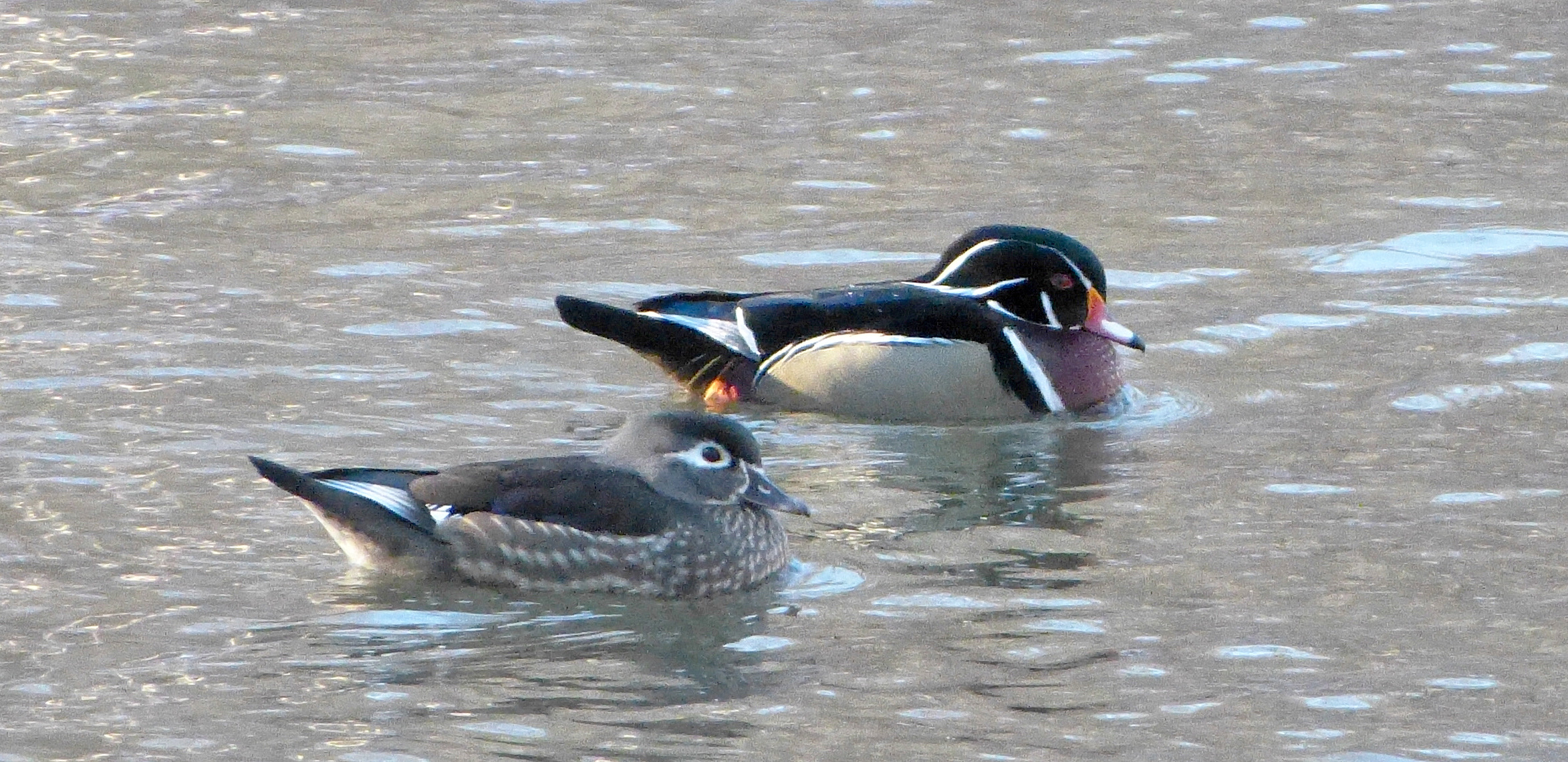
A pair of Wood Ducks, female in front
Leverett has become a true mecca for this most beautiful duck, especially in winter. In the last several years they have breed on these ponds; let’s hope that will happen again this year!
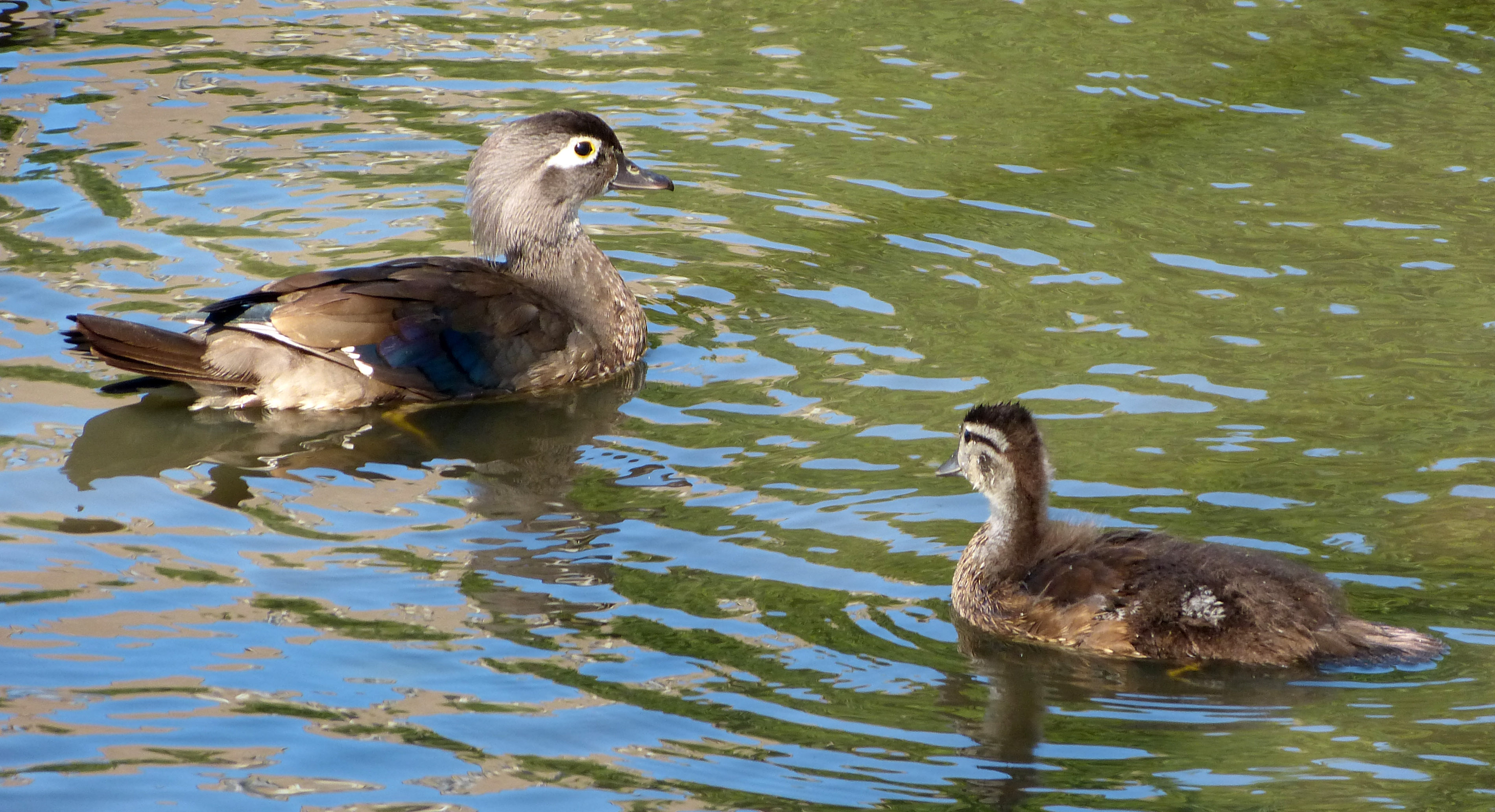
A female Wood Duck with one of of her ducklings on Leverett Pond in 2016.
Here is the complete list of birds from the walk:
Olmsted Park–Leverett Pond, Suffolk, Massachusetts
Apr 30, 2017 8:00 AM – 10:00 AM
Comments: 48-52, sunny
29 species
- Canada Goose 6
- Wood Duck 2
- Mallard 12
- Double-crested Cormorant 1
- Great Blue Heron 1
- Black-crowned Night-Heron 1
- Red-tailed Hawk 1
- Ring-billed Gull 2
- Mourning Dove 1
- Northern Flicker 1
- Warbling Vireo 6
- Blue Jay 3
- Northern Rough-winged Swallow 4
- Tree Swallow 6
- Black-capped Chickadee 2
- White-breasted Nuthatch 1
- American Robin 35
- Gray Catbird 2
- European Starling 7
- Black-and-white Warbler 1
- Yellow-rumped Warbler 2
- Chipping Sparrow 1
- White-throated Sparrow 2
- Song Sparrow 1
- Northern Cardinal 5
- Red-winged Blackbird 10
- Common Grackle 25
- Baltimore Oriole 5
- House Sparrow 6
View this checklist online at http://ebird.org/ebird/view/checklist/S36418547
This report was generated automatically by eBird v3 (http://ebird.org)
Next weekend I will be leading two more walks in the Arboretum. I hope you can join me.
Good Birding!
Posted in Avian, Bird walks, Birds, waterfowl
